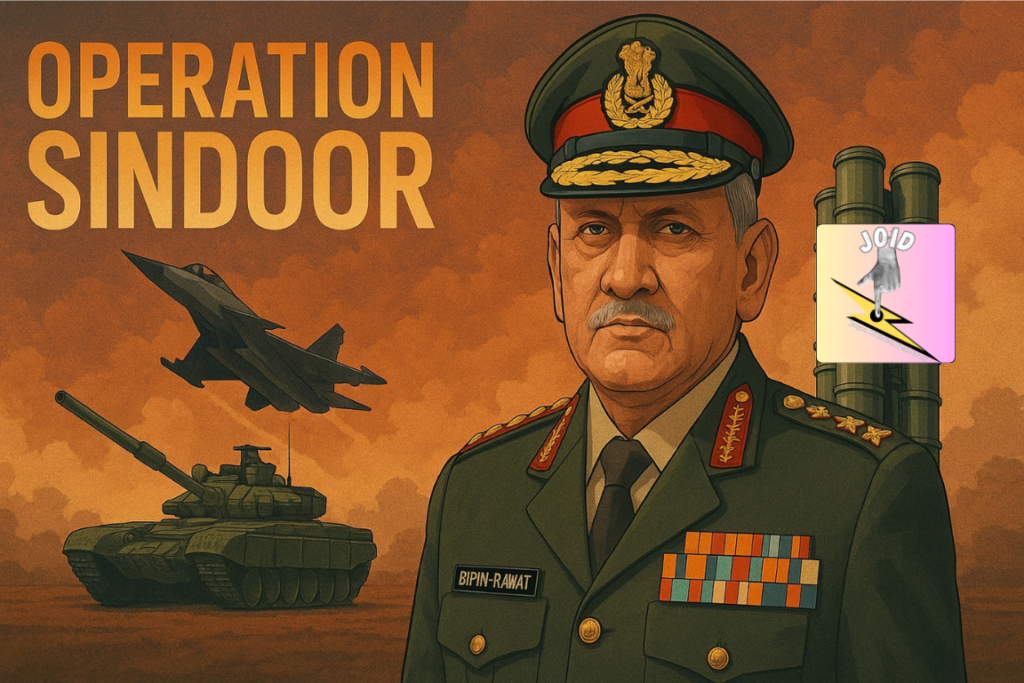
A New Normal in South Asian Warfare: From Balakot to Pahalgam
The geopolitical cauldron of South Asia has been perennially simmering, but the recent escalation following the reprehensible Pahalgam terrorist attack—where innocent Indian tourists fell victim to Pakistan-sponsored jihadist proxies—has catapulted India and Pakistan back into a perilous dance of brinkmanship. Yet, what unfolded post-May 7, 2025, was not merely reactionary vengeance; it was an exemplar of calibrated deterrence, sophisticated preparedness, and transformative military evolution.
Operation Sindoor, launched on the night of May 7, stands as a testament to this evolution. With surgical precision and clinical efficiency, Indian forces dismantled multiple terrorist infrastructure hubs across the Line of Control. Unlike the Balakot airstrike of 2019—which was historic in its assertion of India’s strategic will—Sindoor demonstrated a maturation of military doctrine: jointness in tri-service operations, real-time data integration, and most significantly, an unshakable defensive shield.
The Iron Dome of the Himalayas: S-400 ‘Sudarshan Chakra’ and Strategic Deterrence
In a matter of hours following the Indian air strikes, Pakistan retaliated using a mix of short-range ballistic missiles and Turkish-origin drones and some missiles from Iran —an act as predictable as it was futile. India’s response, however, was anything but routine. The full operational deployment of the S-400 Triumph air defense system—christened internally as the ‘Sudarshan Chakra’—marked a revolutionary leap in subcontinental strategic equilibrium.
Over 80% of hostile aerial threats were neutralized mid-air, with zero reported civilian or military casualties. This was not serendipity. It was strategic foresight, painstaking procurement, and doctrinal restructuring—driven largely by one man whose name today echoes louder than ever in the corridors of South Block: General Bipin Rawat.
The Architect of Modern Indian Warfare: The Vision of General Bipin Rawat
General Rawat was not merely a decorated soldier; he was an institutional architect, a reformist with a general’s stars and a statesman’s intellect. As India’s first Chief of Defence Staff (CDS), his elevation was not ceremonial but catalytic. He broke silos between the three services, ushering in the age of integrated theatre commands and establishing the Department of Military Affairs (DMA) to centralize policy formulation.
His military acumen was not limited to tactical or operational dimensions—it extended into structural overhauls. He advocated for leaner, tech-enabled forces, pushed for indigenous procurement through initiatives like the Defence Acquisition Procedure (DAP) 2020, and introduced the ‘Tour of Duty’ concept for lean, modernized manpower management. These reforms laid the groundwork for India’s tri-service synergy in Operation Sindoor.
The S-400 Gamble and Sovereign Strategic Autonomy
When the S-400 deal with Russia was signed in 2018, India faced considerable pressure from global powers—not least from the United States under its CAATSA legislation. But General Rawat remained unapologetically resolute. “India follows an independent foreign policy,” he declared, asserting that strategic deterrence cannot be outsourced nor dictated by shifting geopolitical alliances.
His advocacy was not rooted in blind allegiance to Russian technology but in cold strategic calculus. The S-400 system was and remains one of the most formidable multi-layered air defense solutions available globally, providing India with the capability to create an aerial exclusion zone as far as 400 km beyond its borders. That vision is today bearing fruit—missiles are intercepted, skies are secured, and cities sleep safely under a dome General Rawat foresaw long before others did.
The Untimely Departure of a Timeless Leader
On December 8, 2021, India lost General Rawat in a tragic helicopter crash—an event that shocked the nation and left a vacuum in strategic leadership. Yet, as recent events prove, legacies are not measured by time served but by institutional footprints. His doctrine of jointness, his commitment to indigenization, and his relentless drive for operational readiness have all coalesced into the formidable force India is fielding today.
In a region plagued by bluster and bravado, where adversaries resort to misinformation and psychological warfare, India under General Rawat has chosen reason over rhetoric, deterrence over destabilization. Unlike their Pakistani counterparts, often entangled in political ambitions and jihadist patronage, Indian generals like Rawat have remained paragons of constitutional duty and operational excellence.
A Legacy That Transcends the Battlefield
As India stands tall amidst escalations, it becomes increasingly evident that political leaders may chart visions, but it is military architects like General Rawat who build the foundation upon which strategic sovereignty stands. In many ways, he is more consequential to India’s long-term security architecture than any transient politician. His decisions—from advocating for the S-400, to restructuring command hierarchies, to catalyzing tri-service unity—are now playing out as textbook case studies in military preparedness.
The Indian Armed Forces today do not merely respond—they anticipate, calibrate, and dominate. This is not a coincidence but the consequence of visionary leadership, doctrinal overhaul, and institutional resilience. As Pakistan reels from failed retaliations and operational chaos, India reaps the dividends of General Rawat’s roadmap—etched in steel, strategy, and sacrifice.
Conclusion: Honouring a Soldier-Statesman
In the annals of Indian military history, General Bipin Rawat’s name deserves to be etched not just in reverence, but in continued strategic implementation. The CDS system, the ‘Sudarshan Chakra’ S-400, the jointness in tri-service operations—all bear his imprint. His contribution is not just felt in the present escalation, but will likely guide India’s strategic doctrine for decades to come.
India must remember him not as a martyr of circumstance, but as a sculptor of supremacy. And as the nation contends with an increasingly volatile neighbourhood, we must find solace—and strength—in the institutions he reimagined and the systems he set in motion.
Our other articles : The suicidal mission of Pakistan’s so called ‘Establishment’ , Bengal Bellwether, Who is Responsible for Bihar’s Migration Crisis? , Why Congress must go solo in Bihar , Jai Bhim | Old is Gold , Resurrection of ‘Dynasty Politics’ , China Faces 125% Tariff by USA: A Strategic Opportunity for India, When the Accuser Becomes the Accused

Author is a scholar of International Relations, Geo-Political analyst and a Serial entrepreneur who successfully ventured in different startups and founded many.
